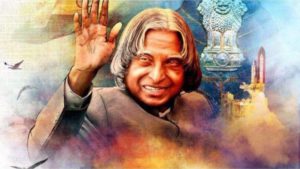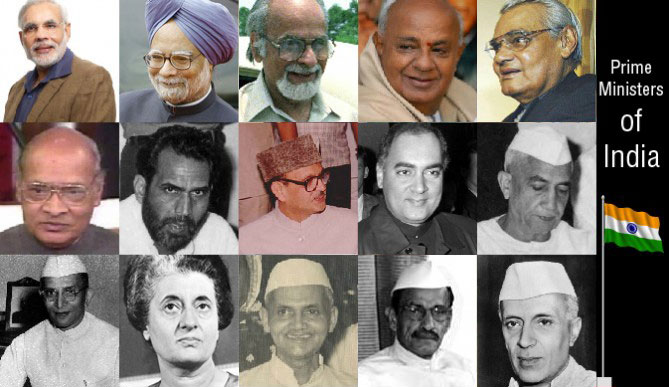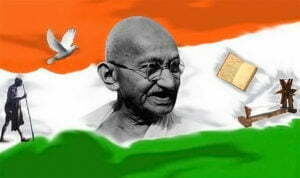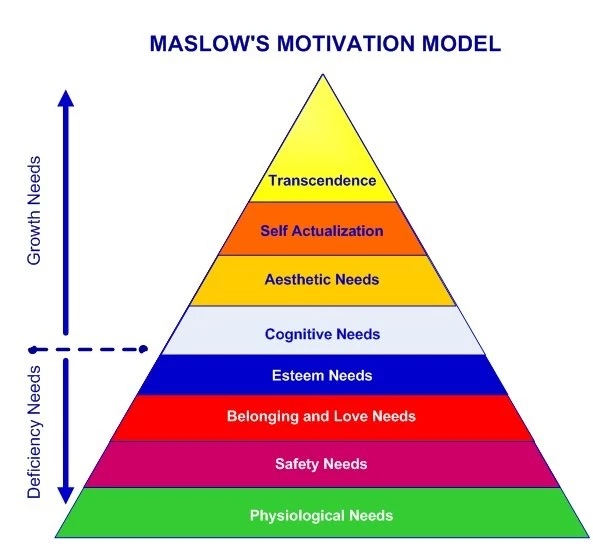
Abraham Maslow
Abraham Maslow, also known as Abraham H. Maslow, an American psychologist and philosopher, is best known for his self-actualization theory of psychology. The Maslow hierarchy theory argued that the primary goal of psychotherapy should be the integration of the self. He was born on April 1, 1908, in New York, New York, and died on June 8, 1970, in Menlo Park, California.
Introduction about Maslow’s hierarchy theory
These needs are completely independent of each other if considered individually. However, the concept of the pyramid suggests that they are interrelated in the sense that when one need is fulfilled only then the next one can be worked upon.
It can be explained this way- until and unless your physiological needs are not satisfied, the need for belonging won’t arrive or if you are having safety and security needs satisfied but biological needs are unmet then you are likely to climb down the pyramid rather than climbing up on it.
Also read more articles about Psychology
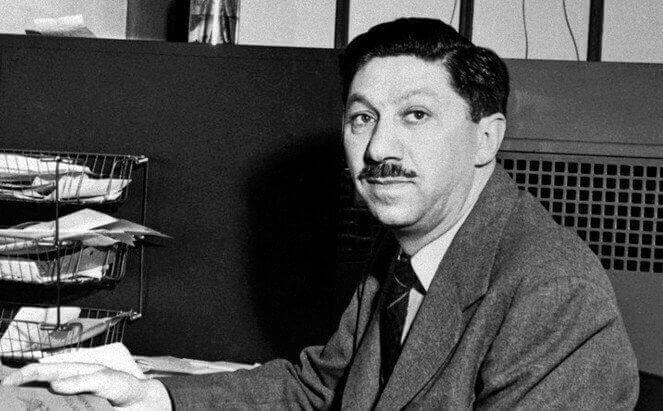
Maslow studied psychology at the University of Wisconsin and Gestalt psychology at the New School for Social Research in New York City. He became the chairman of the psychology department at Brandeis University in Waltham, Massachusetts, in 1951, and stayed there until 1969.
Maslow was a major contributor to humanistic psychology in the United States, which we sometimes refer to as the “third force” in opposition to behaviorism and psychoanalysis. He was influenced by existentialist philosophers and literary luminaries.
Maslow stated in his key writings Motivation and Personality (1954) and Toward a Psychology of Being (1962) that everyone has a hierarchy of wants that must be met, ranging from fundamental physiological demands through love, esteem, and, finally, self-actualization. The next higher level in the emotional hierarchy takes over conscious functioning as each requirement met. Maslow felt that people who were truly healthy were self-actualizers because they met their highest psychological needs by fully integrating the various aspects of their personality, or self.
Needs for Deficiency vs. needs for Growth
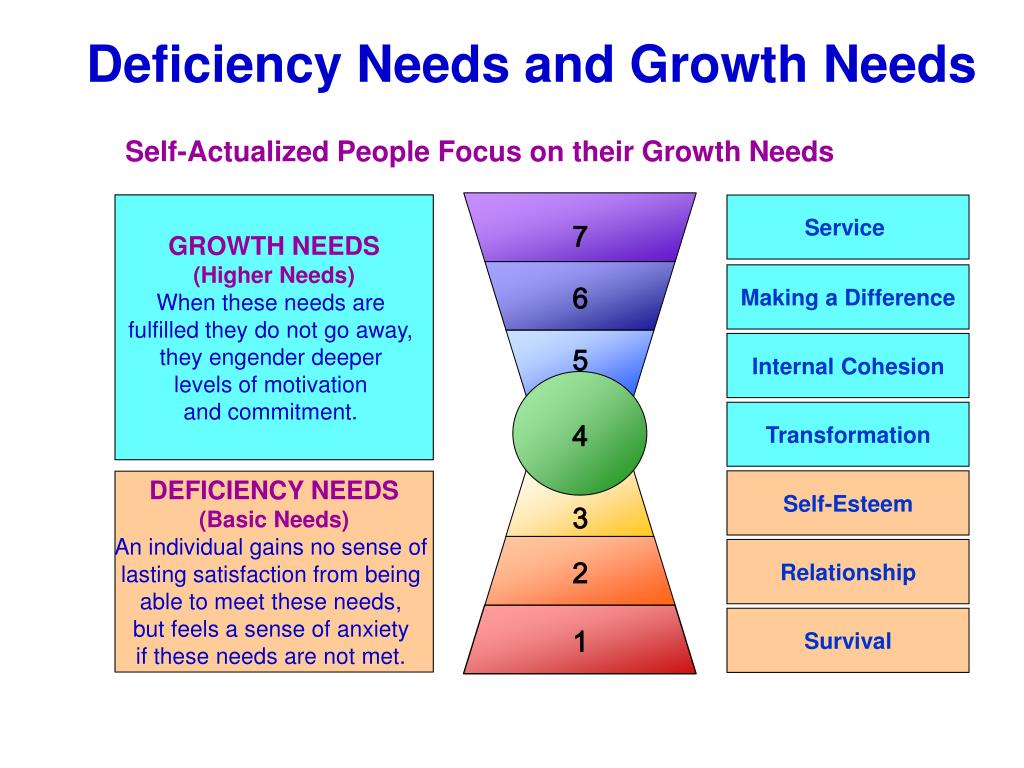
There are two types of needs in this five-stage model: deficit and growth. Deficiency needs (D-needs) correspond to the first four levels, whereas Growth or being needs refers to the highest level (B-needs).
Deficiency needs emerge as a result of deprivation, and they motivate people when they do not feel satisfied. Furthermore, the longer such desires go unfulfilled, the greater will be the desire to fulfil them. The longer a person goes without eating, for example, the more hungry they will become.
Out of these, Maslow identifies the first four needs as deficit needs: i.e if the needs are not met, they make us uncomfortable and we are motivated or driven by these needs in as much as we are able to sufficiently fulfill these needs.
The last four needs, he identifies as growth needs: i.e. we never get enough of these . These needs constantly motivate us as they pertain to our growth and development.
He also shows them in a hierarchy such that we receive motivation primarily from a need only if lower level needs are not a concern. Thus, before one can receive motivation by cognitive or self actualization needs, one has to take care of basic deficit needs like physiological, security, belonging and esteem.
Maslow’s Hierarchy of Needs

Individuals must first satisfy lower level deficit requirements. Only then move on to higher level growth requirements, according to Maslow (1943). He later explained that meeting a need is not a “all-or-nothing” situation. Therefore, note that his earlier words may have created “the mistaken impression that a need must be completely met before the next need occurs”.
When a deficit need is ‘more or less’ met, it fades away. Our activities become routinely focused toward addressing the next set of unmet requirements. These become our most pressing requirements. They are engaging to growth demands.
Growth requirements arise from an aim to grow as a person, not from a lack of anyone or anything. After these demands for growth have been met to a reasonable extent, one may be able to reach the maximum level of self-actualization.
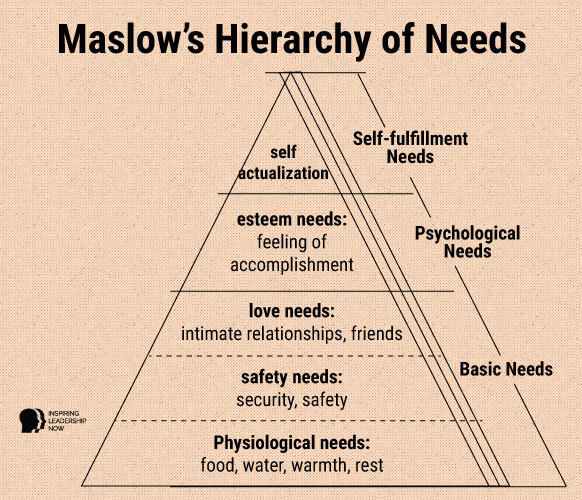
Every person has the ability and desire to progress up the hierarchy toward self-actualization. Unfortunately, failure to address lower-level demands frequently stymies development. Divorce and job loss are examples of life events that might cause a person to move up and down the ladder.
As a result, not everyone will go through the hierarchy in a single direction, but instead will switch back and forth between the many types of requirements.
The five stages in the Maslow’s hierarchy of needs
People need motivation to satisfy various wants, according to Maslow (1943, 1954).
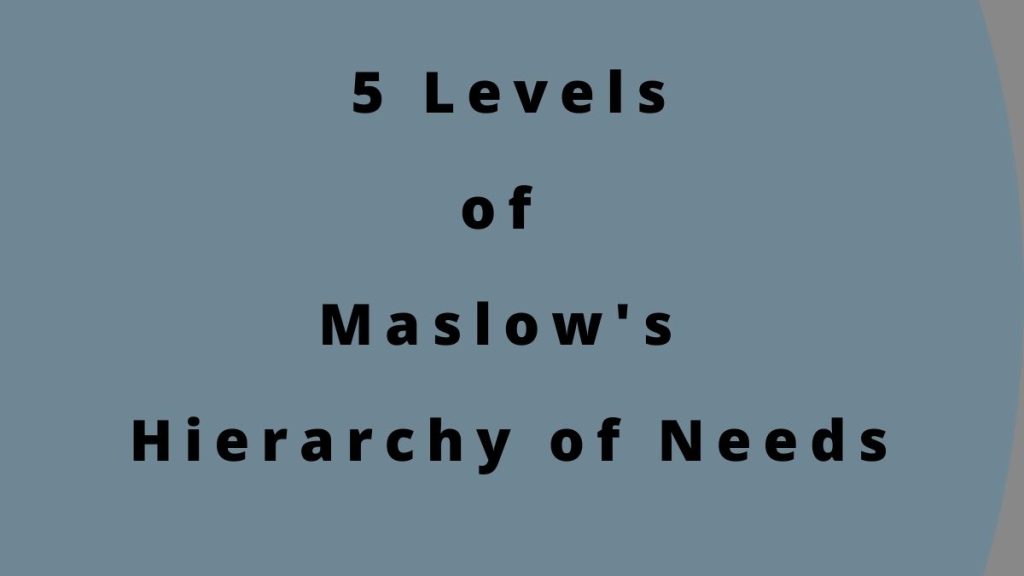
Physical survival is our most basic necessity, and it will be the driving force behind our actions. After completing that level, we can move on to the next level, and so on.
Physiological needs
Air, food, drink, shelter, clothes, warmth, sex, and sleep are all biological necessities for human survival. The human body cannot function optimally if these demands remain unsatisfied. Physiological needs are the most important, according to Maslow, because all other wants are secondary until these fulfill.
Safety needs
After a person’s physiological demands fulfill, security and safety become more important. In their daily lives, people look for order, predictability, and control. These requirements are met by the family and society (e.g. police, schools, business and medical care). Emotional security, financial security (e.g., job, social welfare), law and order, fearlessness, social stability, property, and health and wellness are only a few examples (e.g. safety against accidents and injury).
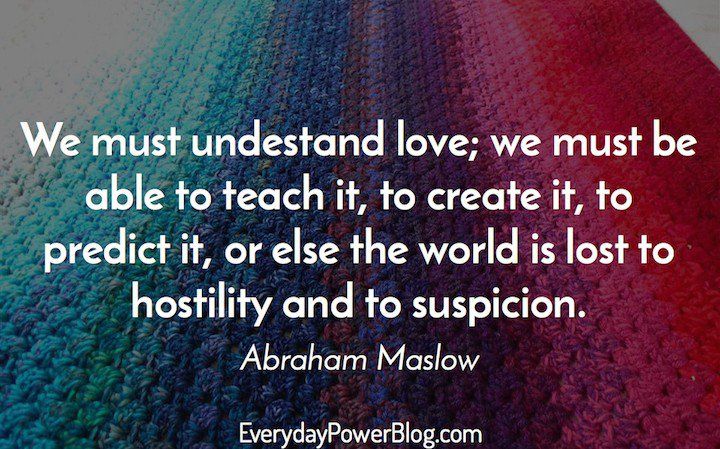
Requirements for love and belonging
The third degree of natural wants, which includes feelings of belonging. Belongingness is a human emotional need for interpersonal relationships, affiliating, togetherness, and being a member of a group. Belongingness necessitates friendship, intimacy, trust, and acceptance, as well as receiving and giving affection and love.
Esteem
The fourth level of Maslow’s hierarchy of needs is self-worth, accomplishment, and respect. Maslow’s hierarchy of needs includes money, value, accomplishment, and respect. According to Maslow, the demand for respect or renown, according to Maslow, is the most crucial for children and teenagers, and it comes before actual character- respect or class.
Self-actualization
The highest level in Maslow’s hierarchy, needs allude to a person’s potential realisation, self-fulfillment, personal growth, and peak experiences.
This level of Maslow hierarchy explains the desire to achieve everything one can, to become the best one can be. Individuals may perceive or focus on this desire in a very distinct way. For example, one person may have a strong desire to be the ideal parent. Others may use art, such as paintings, pictures, or inventions, to express their emotions.
Human needs, according to Maslow:
“It is quite true that man lives by bread alone — when there is no bread. But what happens to man’s desires when there is plenty of bread and when his belly is chronically filled?
At once other (and “higher”) needs emerge and these, rather than physiological hungers, dominate the organism. And when these in turn are satisfied, again new (and still “higher”) needs emerge and so on.This is what we mean when we state that “the fundamental natural demands are arranged into a relative superiority ordering” (Maslow, 1943,p. 375).
Maslow improved his argument based on the universality of a demand ordering over the course of several decades. Maslow proposed that the hierarchy order “is not nearly as rigid” as he may have implied in his earlier definition. According to Maslow, the hierarchy of needs can fluctuate depending on external circumstances or individual qualities. For example, he states that the desire for self-esteem is more crucial than the desire for affection for some people. For some, the desire to be creative may outweigh even the most fundamental needs.
Summary

(a) A hierarchy of needs motivates human beings.
(b) Wants are arranged in a hierarchy of prepotency, with more basic needs having to be supplied in some way (rather than all or nothing) before higher needs can be met.
(c) The order of needs isn’t set in stone, but can change depending on external factors or individual variances.
(d) Most behaviour is multi-motivated, meaning it is driven by multiple basic needs at the same time.
The Expanded Hierarchy of Needs
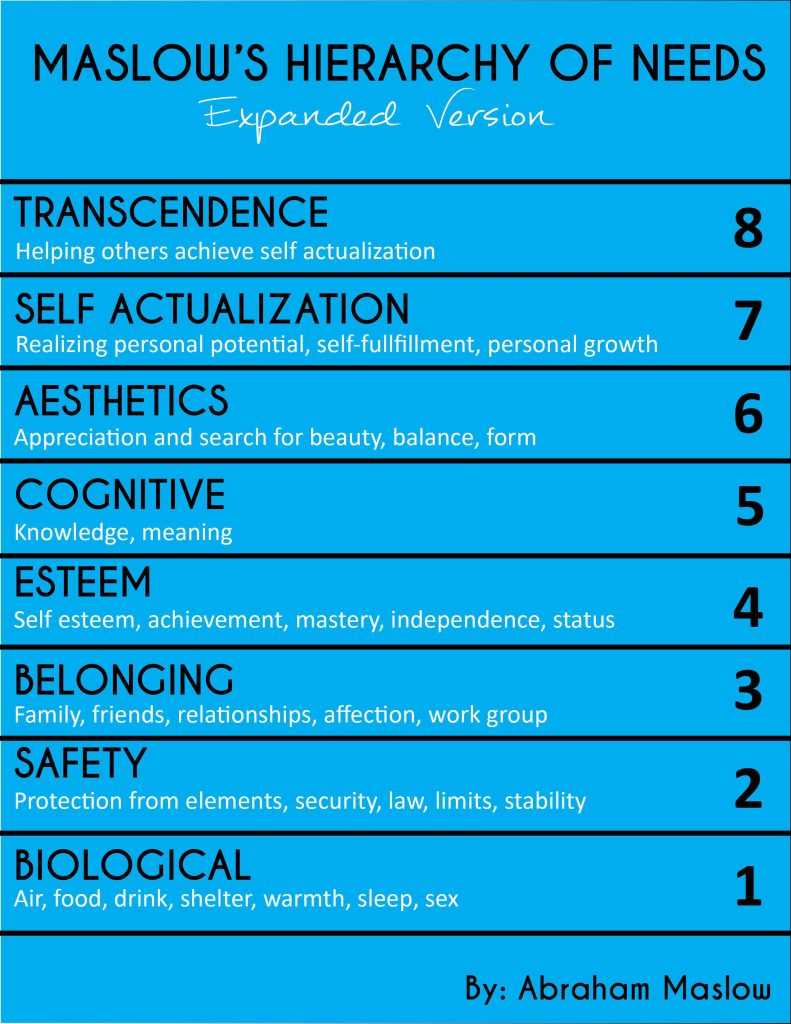
It is worth noting that Maslow’s five-stage model includes cognitive and aesthetic needs as well as later transcendence demands. Changes to the original five-stage model, as well as the seven- and eight-stage models produced.
Self-Actualization
Maslow (1943) developed a more optimistic explanation of human behaviour that centred on what goes right rather than psychopathology and what goes wrong with people. Human potential fascinated him.
Human motivation, according to psychologist Abraham Maslow is founded on people wanting fulfilment and transformation through personal growth. Self-actualized individuals are those who have achieved their full potential.
The need for personal growth and discovery that exists throughout a person’s life is the growth of self-actualization. According to Maslow, “When there’s no chuck, it’s kind of true that man survives by chuck alone.” Self-actualization occurs when a person discovers a meaningful purpose in life that is essential to them.
Maslow offers the following description of self-actualization:
‘It refers to the person’s desire for self-fulfillment, namely, to his proclivity towards getting started in what he’s potentially.
Of course, the particular form that these demands will take will differ widely from one person to the next. It may take the form of a desire to be the perfect mother in one reality, athleticism in another, and oil painting, filmmaking, or innovations in yet another’ (Maslow, 1943, p. 382–383).
Characteristics
Although we are all theoretically capable of self-actualization, the most of us will not, or only to a limited extent. According to Maslow (1970), only 2% of persons will reach the condition of self-actualization.
He was particularly interested in the traits of persons who, in his opinion, had realised their full potential as individuals.
He conducted research on 18 people he deemed to be self-actualized (including Abraham Lincoln and Albert Einstein) Maslow (1970) listed 15 traits of a self-actualized individual.
Characteristics of self-actualizers:
- They have a good sense of reality and can deal with ambiguity;
- Accepting oneself and others for who they are is essential.
- Unpredictable in thought and action;
- Problem-focused (rather than self-centered);
- Weird sense of humour;
- Capable of objective observation of life;
- Extremely inventive;
- Resistant to enculturation, yet not in a malicious way;
- Concerned about humanity’s well-being;
- Able to appreciate basic life experiences deeply;
- Develop strong and fulfilling interpersonal ties with a select group of people;
- Experiential highs;
- The requirement for privacy;
- Democratic viewpoints;
- High moral and ethical standards
Behavior Leading to Self-Actualization:
- They can deal with uncertainty and have an excellent sense of reality. Trying out new ideas instead of sticking to tried-and-true procedures;
- Listen to your own sentiments while analysing experiences rather than the voice of tradition, authority, or the majority. Being honest and avoiding deception.
- Expecting to be unpopular if your viewpoint differs from that of the majority. Taking up responsibilities and working long hours;
- Attempting to identify your defences and then having the fortitude to let them go.
Despite the fact that everyone achieves self-actualization in their own way, there are some features that they all share. However, ‘there are no perfect people,’ and self-actualization is a matter of degree
It is not required to exhibit all 15 characteristics in order to be self-actualized, and not only self-actualized individuals will do so.
Maslow didn’t believe in equating perfection with self-actualization. Self-actualization is simply the realisation of one’s full potential. As a result, a person can be foolish, wasteful, vain, and unpleasant yet still achieving self-actualization. Self-actualization is only achieved by about 2% of the population.
Educational Applications
The hierarchy of needs theory of Abraham Maslow (1962) has had a considerable impact on classroom management and teaching. Maslow (1970a) takes a comprehensive perspective to education and learning, rather than restricting behaviour to a reaction to one’s surroundings.
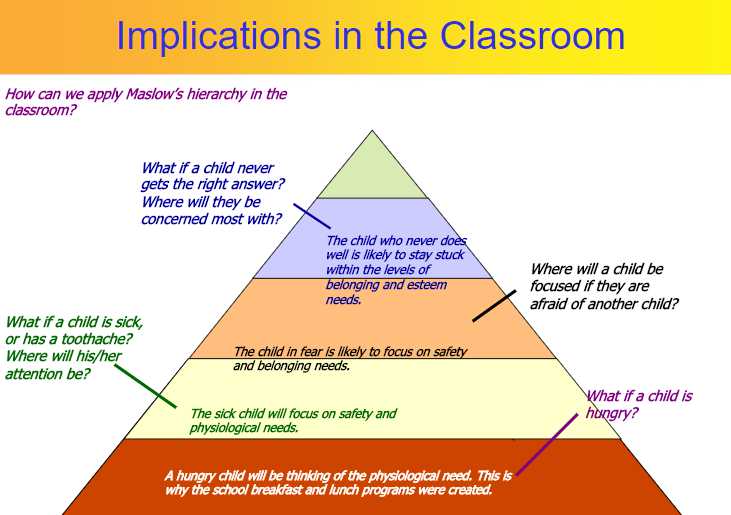
Maslow takes into account an individual’s physical, emotional, social, and intellectual traits, as well as how these effect learning.
Maslow’s hierarchy theory has obvious applicability in the work of teachers in the classroom. A student’s basic physiological demands must fulfill before their cognitive needs can be satisfy.
It will be difficult for a tired and hungry student, for example, to concentrate on their studies.To progress and reach their greatest potential, students must feel emotionally and physically comfortable and accepted in the classroom.
According to Maslow, students need to understand that they are valued and appreciated in the classroom, and the instructor must provide a supporting environment. Students that have low self-esteem will struggle to make enough academic development.
Maslow (1971, p. 195) suggested that a humanistic educational system would produce people who are “stronger, healthier, and more capable of taking control of their own lives.” People would begin to actively affect the society in which they lived if they took more personal responsibility for their personal lives and used a rational set of values to guide their decisions.”
Critical Evaluation of Maslow’s Hierarchy of Needs
Maslow’s thesis is riddled with problems, the most serious of which is his methodology.
Maslow developed the characteristics of self-actualized people using a qualitative method known as biographical analysis.
He studied the life and writings of the 18 self-actualized individuals he had recognised. Based on these sources, he compiled a list of traits that appeared to be specific to this group of people rather than humanity as a whole.
There are a host of problems with this technique from a scientific sense.To begin with, biographical analysis as a method is extremely subjective because it is solely reliant on the researcher’s viewpoint. Personal opinion is prone to bias, lowering the credibility of any acquired data.
Furthermore, Maslow’s biographical research focused on a skewed sample of self-actualized persons, with a disproportionate number of highly educated white men (such as Thomas Jefferson, Abraham Lincoln, Albert Einstein, William James, Aldous Huxley, Beethoven).
Another criticism is Maslow’s belief
That a person’s lower needs must fulfill before they can reach their full potential
People are nonetheless capable of higher-order desires like love and belonging, as civilizations with substantial populations of poor people demonstrate (such as India). This should not happen since, according to Maslow, people who have trouble meeting basic physiological requirements (such food, shelter, and so on) are incapable of meeting higher growth demands.
Furthermore, many creative people, such as authors and artists (e.g., Rembrandt and Van Gogh), were poor for much of their lives, yet they were self-actualizer.
by increased growth requirements at the same time as reduced deficiency requirements (Wahba & Bridwell, 1973).
The outcomes of the study support the hypothesis that universal human needs remain across cultures. The hierarchy’s ranking of necessities, on the other hand, was incorrect.
FAQs related to Maslow’s Hierarchy of Needs
What are the 5 basic human needs?
These five basic human needs drive behavior, and they consistently apply to school settings. This is our basic physiological need: to survive as individuals and reproduce so that we can survive as a species. Survival includes our physical needs for food, water, air, safety, shelter, warmth, health, and sex.
How many levels are there in Maslow hierarchy theory?
There are five main levels to Maslow’s hierarchy of needs. These levels begin from the most basic needs to the most advanced needs. Additionally, maslow originally believed that a person needed to completely satisfy one level to begin pursuing further levels.
What is Maslow’s hierarchy of needs theory?
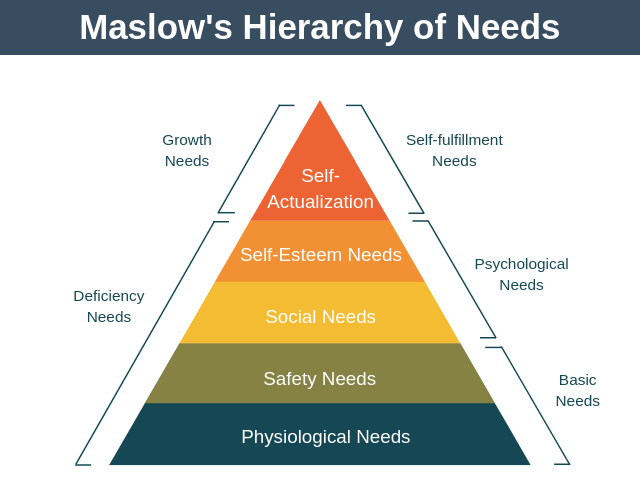
Abraham Maslow’s hierarchy of needs is one of the best-known theories of motivation. Maslow’s theory states that certain physiological needs motivate our actions . Likewise, a pyramid of needs represents it , with the most basic needs at the bottom and more complex needs at the top.
The meaning of self Actualisation in Maslow hierarchy?
Self-actualization is the complete realization of one’s potential, and the full development of one’s abilities and appreciation for life. Additionally, this concept is at the top of the Maslow hierarchy of needs, so not every human being reaches it.
What is belongingness and love In Maslow’s hierarchy needs?
Belongingness, refers to a human emotional need for interpersonal relationships, affiliating, connectedness, and being part of a group. Likewise, examples of belongingness needs include friendship, intimacy, trust, and acceptance, receiving and giving affection, and love.
What is the difference between Maslow’s hierarchy and Rogers theories?
However, the difference between Maslow and Rogers is in their humanistic theories of self-actualization. Moreover, when Abraham Maslow sees the functioning of persons in one’s own self, Rogers emphasizes the need of the environment. Furthermore, at the same time, Rogers considered it to be the only motivation that drives people forward.
Who came first Maslow’s hierarchy theory or Rogers?
During the time when Carl Rogers was first developing his Person-Centred therapy – in the 1940s – another US psychologist, Abraham Maslow (born just six years after Rogers), conceived an idea that has become known as ‘Maslow’s hierarchy of needs’
What is Abraham Maslow’s hierarchy theory?
Abraham Maslow was an American psychologist who developed a hierarchy of needs to explain human motivation. Furthermore, that people have a number of basic needs that must fulfill before people move up the hierarchy to pursue more social, emotional, and self-actualizing needs.
Share with your friends




